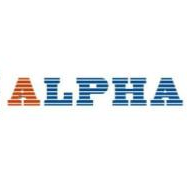b

Thank You!
Your requirement has been sent, we will contact you quickly!
Sent Failed!
Try again!
![]()
Name:Benzyl Alcohol
M.F.:C7H8O
M.W.:108.14
CAS No.:100-51-6
Package:5kg/bottle, 20kg/drum
Appearance:Colorless liquid; weak aroma and burning odor; hygroscopic.
Soluble in water and can be mixed with ethanol, chloroform or ether.
Quality Standard:CHP2020; USP40-NF35; EP9.0
Application:
As an antibacterial agent in pharmaceuticals, foods and cosmetic.
As a solubilizer and local anesthetic. The common dosages of the product in various fields are shown in the table below.
Application | Dose |
Eye drops | 0.5%-1.0% |
Antibacterial agents for oral and parenteral preparations | ≤2.0% |
Cosmetic antibacterials | 3.0% |
Solubilizers | ≥5% |
Disinfectants | 10% |
Local anesthetics | 10% |
Incompatibility: Incompatible with oxidants, strong acids and methyl cellulose. Non-ionic surfactants such as Tween 80 will reduce its antibacterial activity to a lesser extent than hydroxybenzyl and quaternary ammonium compounds. It can be slowly adsorbed by natural rubber, neoprene, butyl synthetic rubber, etc. It can dissolve certain components from polystyrene syringes and damage the syringes.
Safety: The concentration of this product as a preservative usually does not cause side effects, but it is not suitable for use in infant preparations.
Storage:
This product is slowly oxidized into benzaldehyde and benzoic acid in the air and does not react with water. The aqueous solution can be sterilized by filtration or autoclaving, but benzaldehyde may be produced during autoclaving.
It should be stored in metal or glass sealed containers, not plastic containers (except polypropylene containers or Teflon coated containers) and preserve in a cool, dry and dark place.

